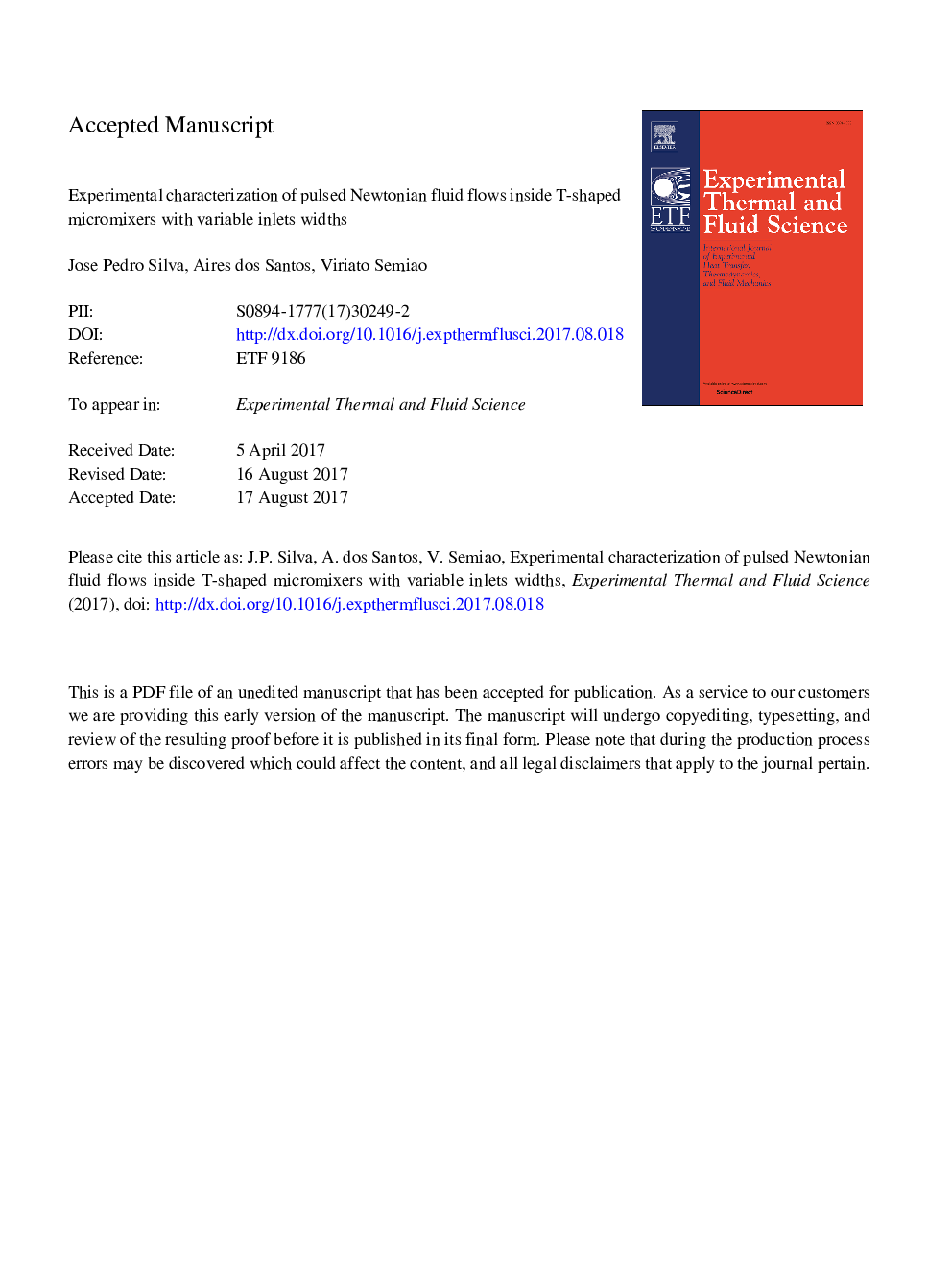| Article ID | Journal | Published Year | Pages | File Type |
|---|---|---|---|---|
| 4992471 | Experimental Thermal and Fluid Science | 2017 | 47 Pages |
Abstract
Fluids mixing in microfluidics is hindered by the laminar flow regime operation and, therefore, it constitutes an important challenge. Symmetrical and asymmetrical T-micromixers are used to assess the mixing quality improvement, when pulsed signals are imposed to the inlet flows. The used chips are manufactured using polydimethylsiloxane and soft lithography techniques. The flow images are acquired with a high frequency/resolution camera coupled to a microscope, and then are digitally processed. For both symmetrical and asymmetrical geometries, the mixture quality is characterized for non-pulsed flows at different Reynolds numbers, evidencing its fundamental influence on the mixing performance. For pulsed flows, the analysis is based on the parameters that characterize the imposed wave. Results show that the application to both inputs of pulses in phase opposition is the most beneficial, with maximum performance increases of 100% and 90.6%, respectively for the symmetrical and the most asymmetrical micromixers. Moreover, the increase of the pulse amplitude yields an increase of the mixing quality (maximum increase of 90.6% for the most asymmetrical micromixer). Additionally, the increase in frequency results in a decrease of the mixing quality. The width reduction of the outlet channel enhances the mixing quality due to the appearance of vortex structures, whereas its length had no particular influence on the results. From the flow images acquired at instant t, T⩽t⩽2T, the experimental data of αmix for pulsed flows correlate according to αmix=Re2.17WaÃWbDH4.79Va+VbV6.034ÎQÏVDH20.0151+θ2Ï0.698DHVt1.51St-0.0073, with the non-dimensional parameters varying in the ranges 156⩽Re⩽289; 6.15Ã10-5⩽St⩽3.08Ã10-4; 7.5Ã10-1⩽WaÃWbDH⩽1.06; 1.5⩽(Va+Vb)V⩽2; 8.59Ã109⩽4ÎQÏVDH2⩽3.44Ã1010; 1⩽1+θ2Ï⩽1.5; and 1.54Ã10-5⩽DHVt⩽3.81Ã10-5.
Keywords
Related Topics
Physical Sciences and Engineering
Chemical Engineering
Fluid Flow and Transfer Processes
Authors
Jose Pedro Silva, Aires dos Santos, Viriato Semiao,
